Top 10 tall bellflowers: for their unique flower shape |
|
|
|
|
 |
| 278 sec |
reliable and easy to use
Sometimes you come up with a top 10 of a perennial plant and later think: oops. That happened with this episode. Beautiful plants, tall Campanula species, but in fact, there's not much choice, and I've already included almost all of them in one top 10. Of course, there are more, but they're much harder to find at nurseries. It seems tall bellflowers aren't getting much attention; there's barely any breeding work being done on them at the moment (as far as I know). That doesn't take away from the fact that they are remarkable plants due to their distinct flower shape, which only occurs in this genus and other closely related ones. They're reliable and easy to work with, so definitely worth exploring.
 |
biodiversity
Some insects are specialized in using this family, the Campanulaceae. In the Netherlands, these are the various species of bellflower bees; all of them depend on Campanula. The leafcutter bee and several butterfly species also use bellflowers as host plants. So you're not just planting them for yourself or your client, but also for wildlife. There are around 300 different species, from tall to medium and low-growing, including native species like Campanula persicifolia and C. latifolia. For humans, the flower is edible and looks decorative in salads. Other well-known genera in this family include Jasione, Lobelia, Phyteuma, and Platycodon.
growing conditions
Most garden Campanula species prefer nutrient-rich soil, whether calcareous or acidic. When grown in the right conditions, they are not easily affected by pests or diseases. Otherwise, you might see rust, mildew, or leafhoppers on the plant. Some species self-seed easily, like Campanula persicifolia; others spread, like Campanula glomerata, and some stay in the same spot for years, like Campanula lactiflora.
the top 10
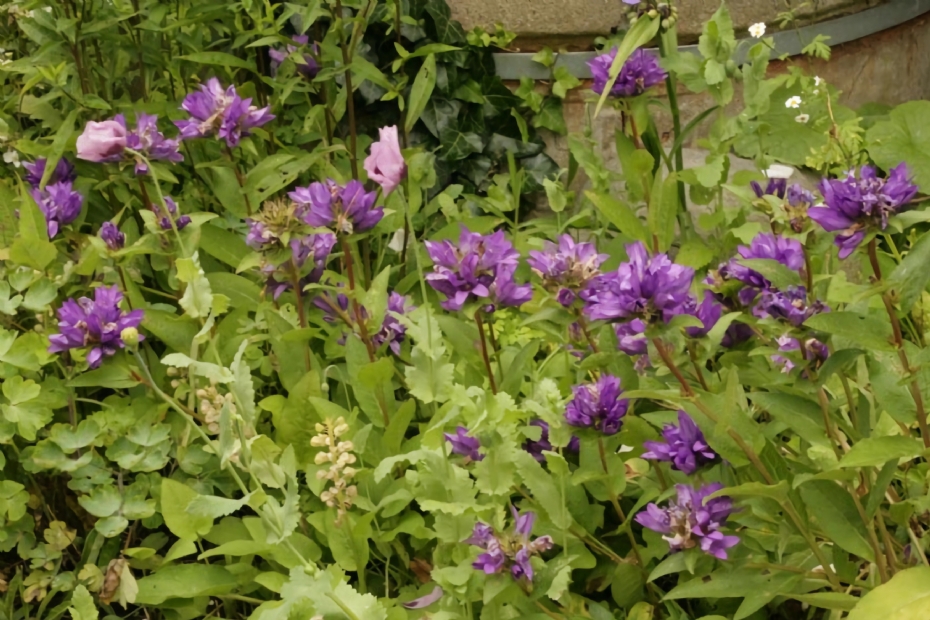 | | Campanula glomerata Photo: Wikimedia commons |
|
|
campanula glomerata (photo Plantentuin Esveld)
This plant is known in Dutch as "kluwenklokje." It's one of the few taller Campanula species that tends to spread. That may be bothersome, but it can also create a natural appearance—depending on how you apply it. It flowers in June-July and is available in various cultivars. A good blue form is 'Acaulis'. 'Caroline' is pink-flowered and remains in place. The white form is simply called 'Alba'. 'Chico Blanco', 'Chico Rosa', and 'Chico Merano' are protected cultivars that stay lower than the others and are still hard to obtain. They thrive in well-drained soil and prefer sun or partial shade for optimal bloom.
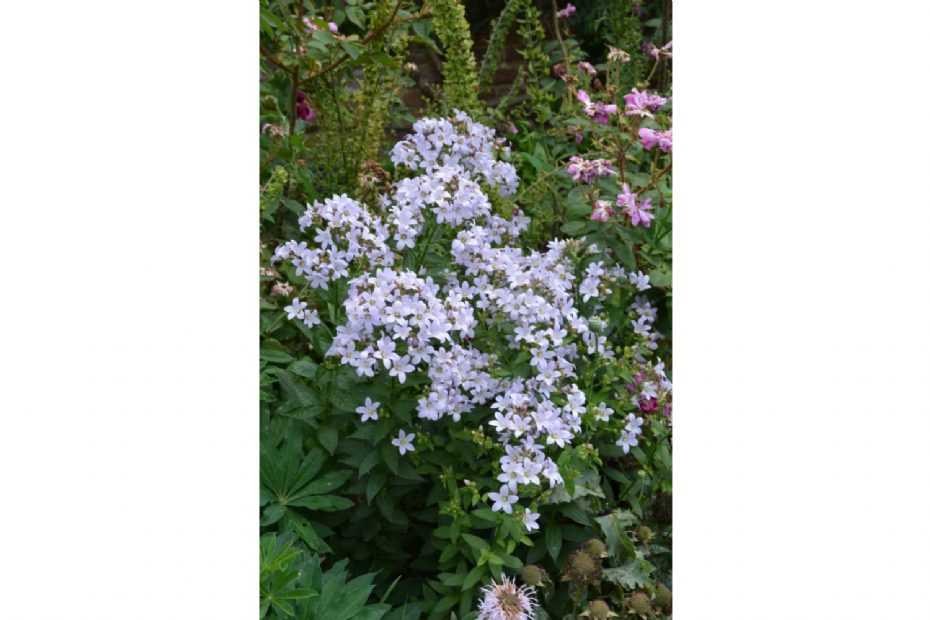 | | Campanula lactiflora |
|
|
2 campanula lactiflora
Campanula lactiflora gets its name from the milky sap in its stems. Though most Campanula species have this feature, Linnaeus named this one after it. Most cultivars reach about one metre in height, such as 'Loddon Anna' (pink), 'Alba' (white), and 'Prichard's Variety' (blue). Only 'White Pouffe' and 'Pouffe' are more compact. The plant occurs in the wild in the Caucasus, growing in partial shade. The stems have leaves from bottom to top, topped with a tuft of bellflowers with slightly pointed petals. It's suitable for the Chelsea chop.
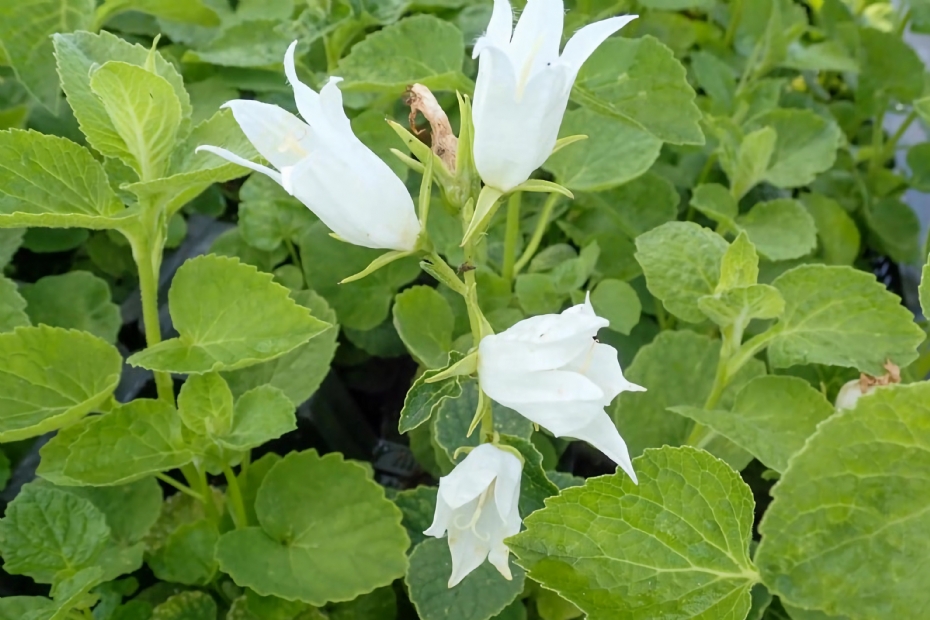 | | Campanula latifolia (photo Plantentuin Esveld) |
|
|
3 campanula latifolia
The broad-leaved bellflower is native to parts of Europe. It grows upright with long stems, up to 1.5 meters tall, topped with a row of fairly large bells. It self-seeds easily, suggesting its best use is in small groups scattered through the border for a natural look. It thrives in partial shade. The natural subspecies var. macrantha is the most commonly grown. There is also a white-flowering form that even performs well in full shade, where it lights up nicely. 'Gloaming' is a newer lilac-flowering variety. The flowers are nicely horizontal relative to the stem.
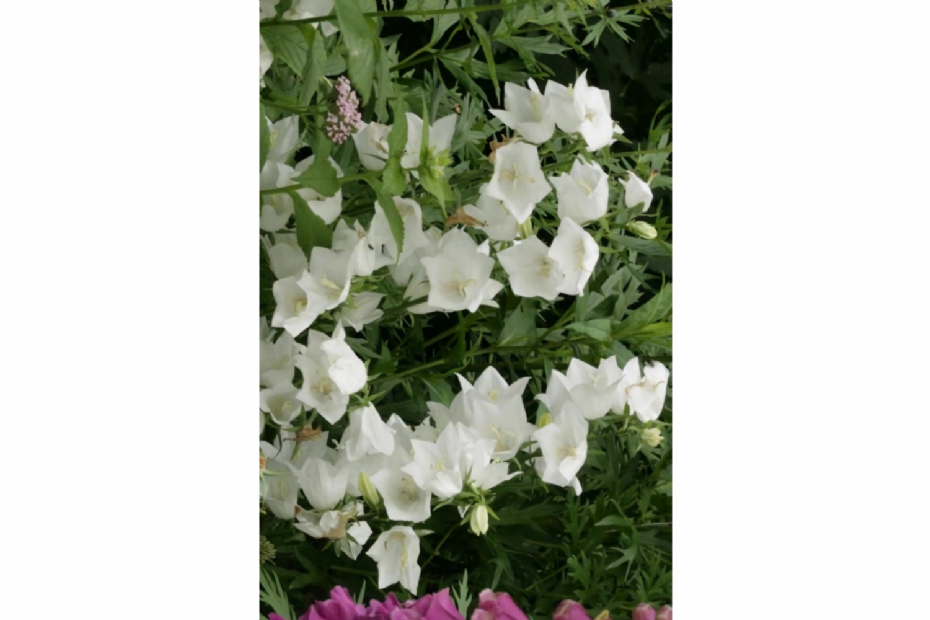 | | Campanula persicifolia 'Alba' (photo Plantentuin Esveld) |
|
|
4 campanula persicifolia campanula persicifolia 'alba' (photo: Plantentuin Esveld)
Because Campanula persicifolia self-seeds easily, it can be used effectively as a filler plant. Personally, I find large groups less appealing. The airy structure stands out more when the plants are planted randomly. It can even tolerate deep shade and grows up to a metre tall in nutrient-rich soil. If you cut off the spent flowers, it will bloom longer. 'Alba' and 'Caerulea' are the most common cultivars, but there are also compact forms like 'Takion White' and 'Takion Blue'. These are at least half the height but beware: these cultivars are often sold for their visual appeal but are frequently forced too quickly in greenhouses.
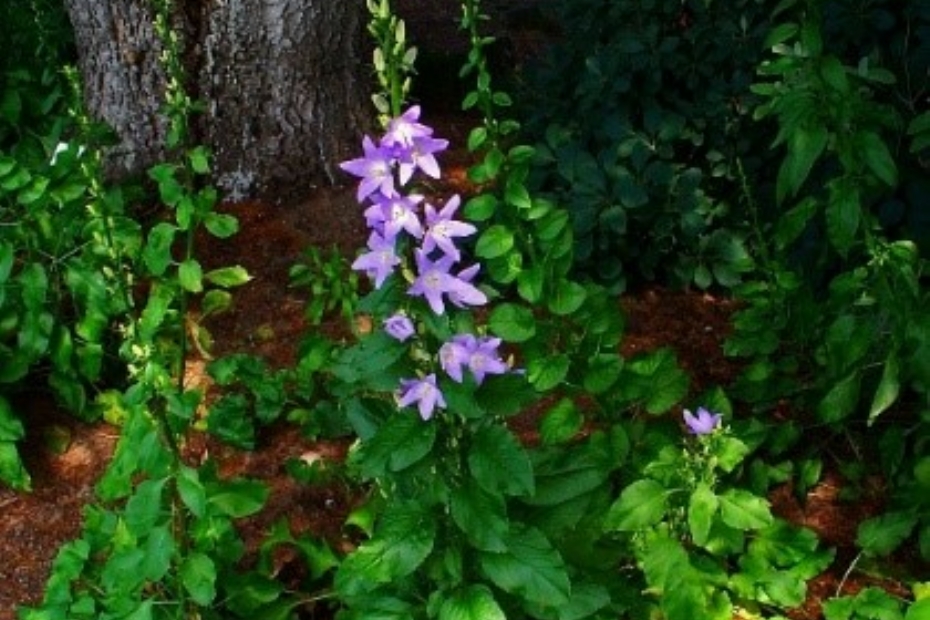 | | Campanula pyramidalis |
|
|
5 campanula pyramidalis
Campanula pyramidalis also occurs in the wild in Eastern Europe and is sometimes found naturalized in the Netherlands. Officially it's a biennial, but because it maintains itself so easily, it won't disappear. It is wise to cover it with conifer branches during harsh winters, as it dislikes our wet winters. The entire plant shape, including the flower, is pyramidal, as the name suggests: coarse leaves at the base, getting smaller towards the top, ending in the flowering section. The petals are somewhat pointed. Due to the long flower stalk, it blooms from June to September.
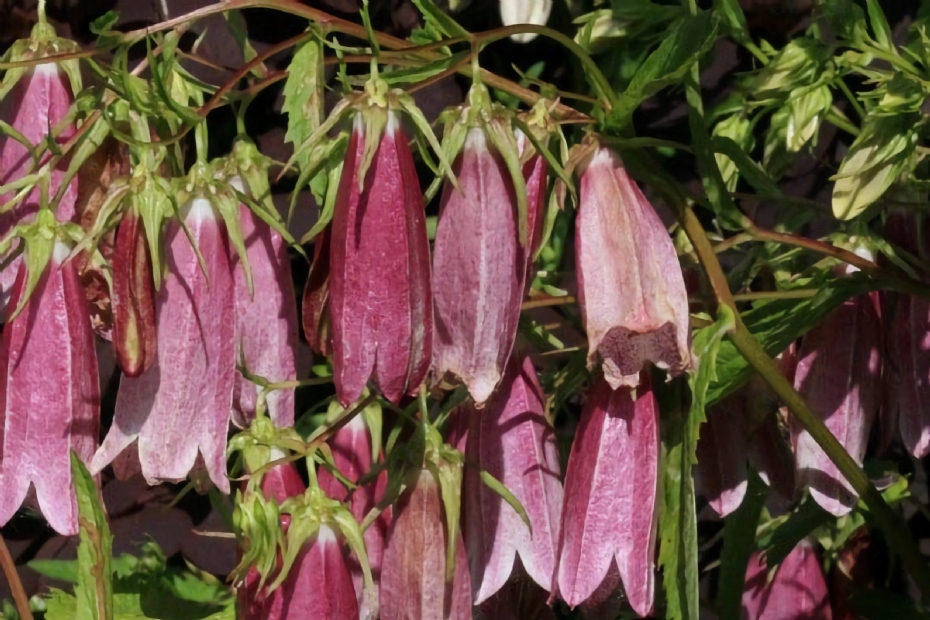 | | Campanula 'Elizabeth' (photo Plantentuin Esveld) |
|
|
6 campanula 'elizabeth'
Within the assortment, hybrids have been developed to combine the best traits of their parent plants. One parent of 'Elizabeth' is C. takesimana. The tubular bells hang from branched stems and are creamy white with red spots. 'Elizabeth' also has C. punctata in its lineage, which blooms dark pink/red and has narrower bells. The hybrid combines features of both: a larger flower in antique pink. It has heart-shaped leaves that are glossy and smooth rather than hairy. The plant prefers full sun to light shade and blooms from June to September—especially when spent stems are removed.
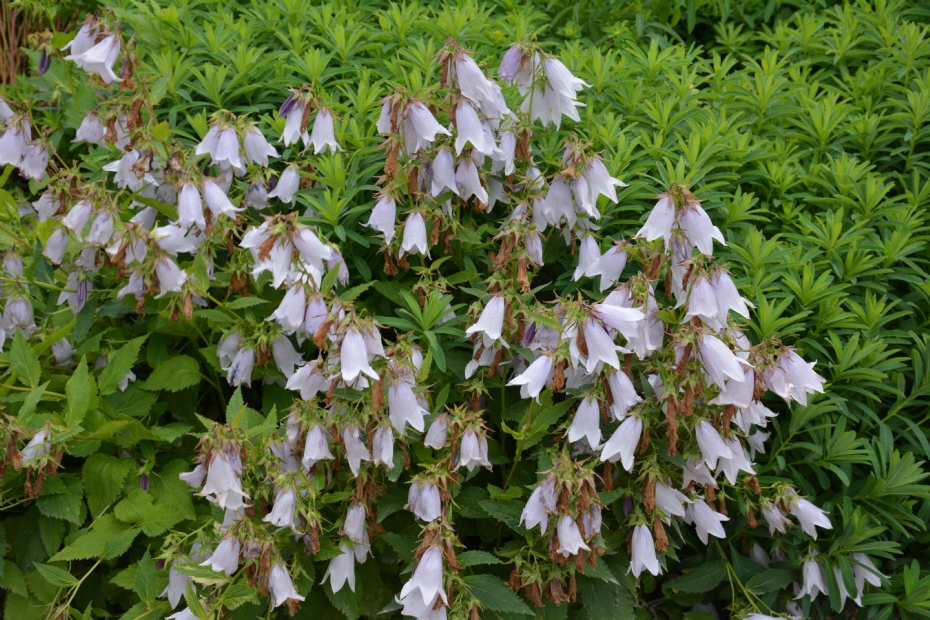 | | Campanula 'Iridescent Bells' |
|
|
7 campanula 'iridescent bells'
Another popular cultivar that originated from a hybrid is 'Iridescent Bells'. It stands out with its striking bloom. You might expect the flowers to match the dark blue/purple buds, but instead, a fresh, glowing light blue bell emerges. This is known as an 'iridescent effect'—a magical play of light, according to the person who named the cultivar. Because not all buds open at once, you get a mix of colors. Like 'Elizabeth', this cultivar is also suitable as a cut flower. According to Chris from nursery Morning Glory, this is the best large-flowered selection.
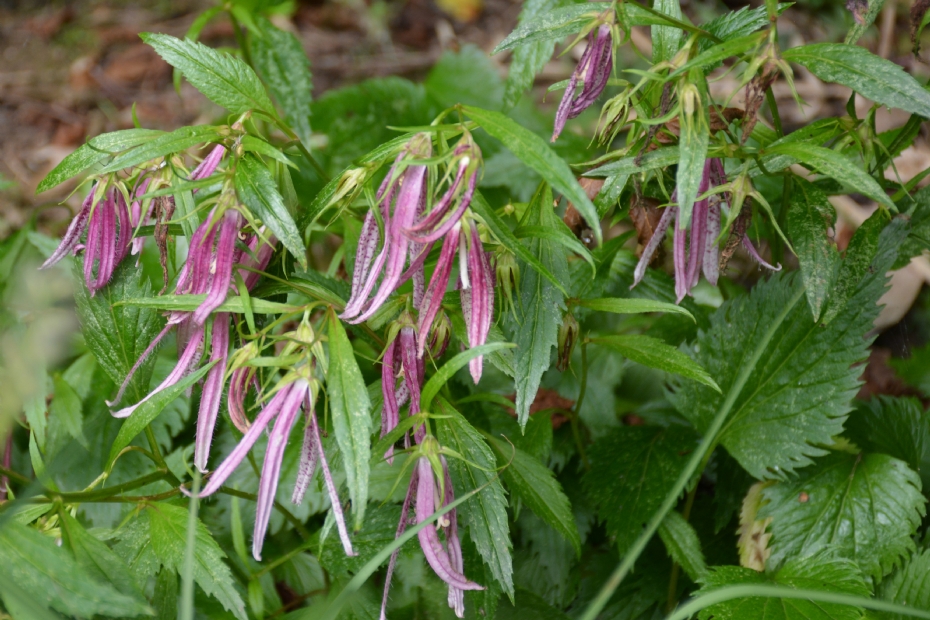 | | Campanula 'Pink Octopus' pbr |
|
|
8 campanula 'pink octopus' pbr
'Pink Octopus' is a Campanula with a distinctly non-Campanula appearance. The fuchsia pink flowers are split into narrow petals, resembling octopus tentacles. They bloom loosely along the stem, from late spring well into summer. The flowers are not as dominant as the large bells, but their unusual shape creates a striking effect among other (perennial) plants. The petals even have a slight twist, and if you look closely, you'll see dark spots. The plant was introduced under license by the American company Terra Nova. It is a selection closely related to C. punctata.
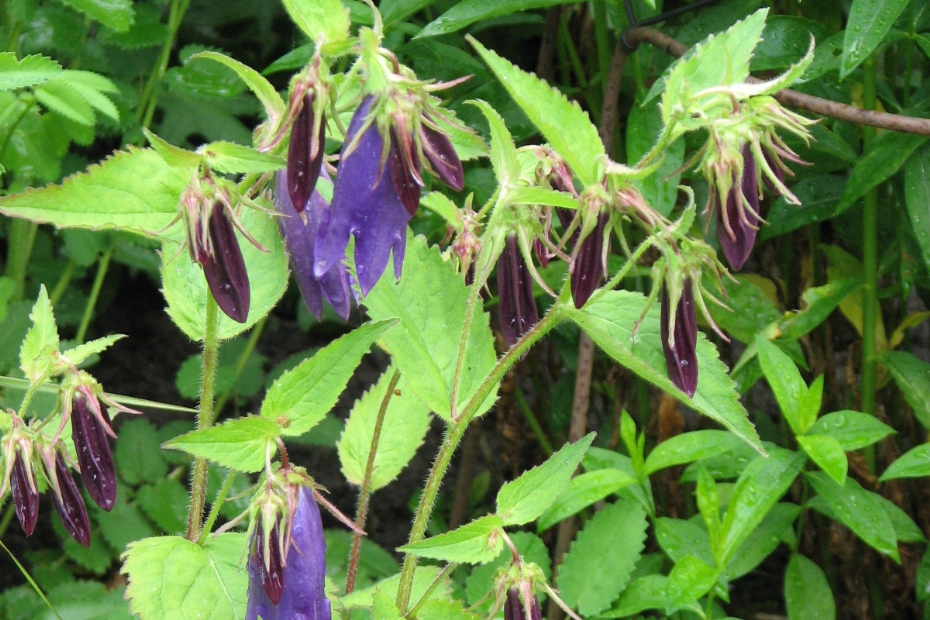 | | Campanula 'Sarastro' |
|
|
9 campanula 'sarastro'
'Sarastro' stands out with its abundance of violet-blue flowers, compact growth, and winter hardiness. This is another plant with clearly tubular flowers, which hang in large clusters above the foliage. The hairy, heart-shaped leaves resemble those of C. punctata. That species is indeed one of the parents; the other is C. trachelium. 'Sarastro' was bred at Sarastro nursery in Austria, and after this discovery, the plant was named after the nursery. It must be a good plant—otherwise, you wouldn't name it after yourself. In the photo, you can see the start of the bloom; the buds are darker than the open flowers.
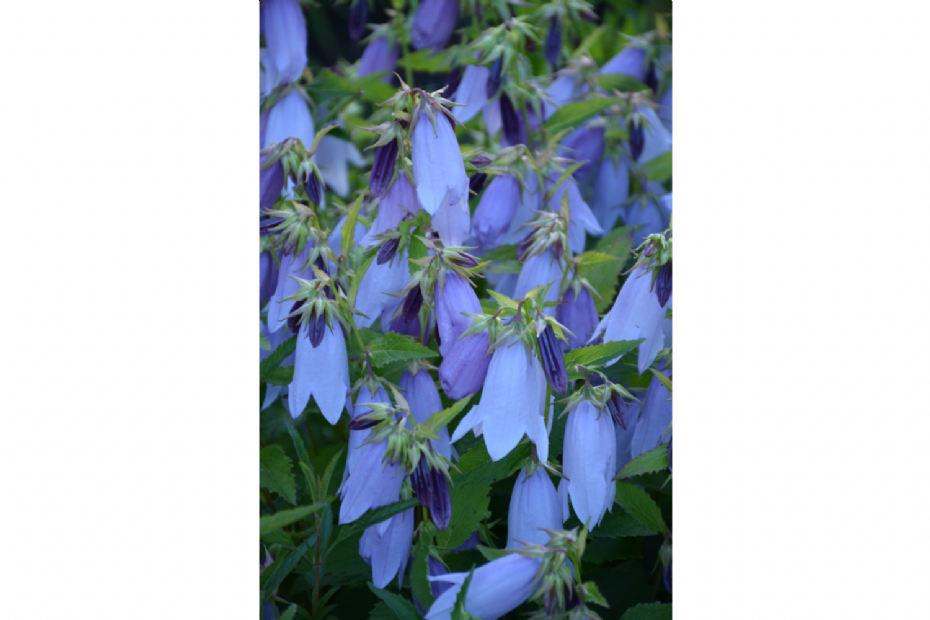 | | Campanula 'Summertime Blues' pbr |
|
|
10 campanula 'summertime blues' pbr
According to Terra Nova, the aforementioned nursery, this own introduction is the best of all. You don't have to take their word for it, but indeed, a clump was flowering profusely in the Proeftuin van Holland in Boskoop. The flowers start forming in May and continue blooming through September. The color is uncommon; few perennials offer this specific shade of blue.
With this tenth plant, I've now covered five that have C. punctata in their lineage. These are striking perennials that are relatively disease-resistant, bloom for a long period, and have an unusual flowering habit. Not much breeding has been done in tall Campanula species. That makes this group special and well worth your attention.
combinations
Depending on the species or cultivar, there are various garden combinations to consider. The upright flower stems that rise delicately into the air make excellent weaving plants—ideal among Geranium species, which tend to spread. The tall, bushy C. lactiflora cultivars pair well with Echinacea, Echinops, Lythrum, and Veronicastrum. The group with large 'bells' adds volume to the herbaceous layer of the border. Combine them with more airy plants like Thalictrum or Alchemilla.
This article was originally published on 11 May 2025 on the website of De Hovenier.
| LOG IN
with your email address to respond.
|
|
|
| There are no comments yet. |
Tip the editors
|
| |
Anyone can place small ads for free through their own account.
Place a free ad
|
|
|
|